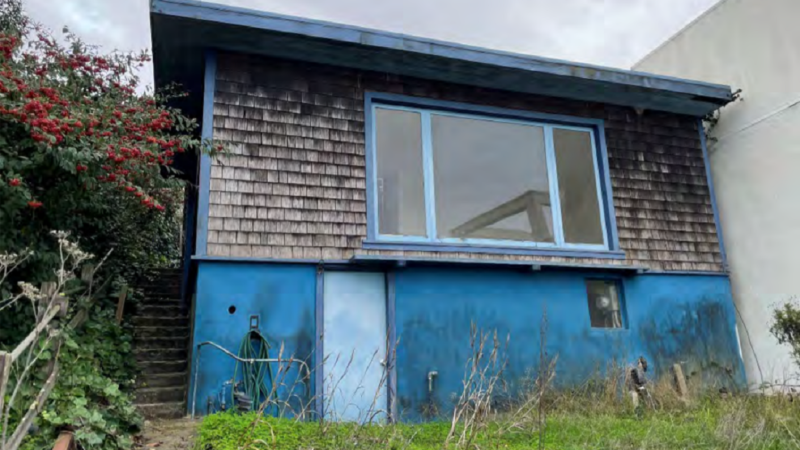San Francisco Honors Early Lesbian Activists by Preventing Redevelopment of Their Home
The San Francisco Board of Supervisors voted to landmark the longtime home of gay rights activists Phyllis Lyon and Del Martin.

The San Francisco Board of Supervisors is celebrating a pair of pioneering civil rights activists the only way it knows how: by constricting housing development.
On Tuesday, the Board voted unanimously to landmark the longtime home of Phyllis Lyon and Del Martin in the city's Noe Valley neighborhood, reports the San Francisco Chronicle.
Lyon and Martin, a lesbian couple, were early gay rights advocates who co-founded the first lesbian rights organization in the country, the Daughters of Bilitis. The two were also the first same-sex couple to be married in California, back in 2004.
Martin died in 2008, and Lyon in 2020. Their home passed to a daughter of Martin's that year before being sold, alongside a vacant lot next door, to a new owner. After its sale, a grassroots group called the Friends of Lyon-Martin House sprang up to prevent the home's demolition, reports the Chronicle. Its landmark status means they can rest easy.
Owners of locally designated landmarks in San Francisco have to jump through a number of extra hoops should they wish to alter their property. That includes applying for a special Certificate of Appropriateness when making any exterior alternations, which is then reviewed by a number of government bodies including the Historic Preservation Commission, the Planning Department, and potentially the Planning Commission (which oversees the Planning Department).
This 13-page bulletin published by the San Francisco Planning Department outlines the process to apply for one of these Certificates of Appropriateness.
"The Lyon-Martin House is eligible for local designation as it is associated with events that have made a significant contribution to the broad patterns of San Francisco history and with persons significant to San Francisco history," reads the ordinance passed by the Board of Supervisors earlier this week.
That ordinance lists out a number of specific features about the house that will have to be preserved or replaced in kind. That includes the location of the house as setback from the street, the massing and roof form at the front of the building, the physical and visual connection between the front façade of the house and the street, the large living room window, and the internal configuration of the living room and dining room/office area.
The point of these additional rules for landmarked properties is to prevent any major changes to them. Indeed, that's the whole point of historic preservation laws.
One can argue about whether these regulations are appropriate or necessary for the goal of protecting particularly important historic buildings. Arguments in favor of those regulations wouldn't apply to the Lyon-Martin house.
Neither the landmarking ordinance itself—or the actual appearance of the house—suggest there's anything particularly interesting or important about its appearance. Rather, the preservation of the building is being justified on the grounds that interesting and important things took place inside it.
The history the Board of Supervisors is trying to preserve, in other words, is incidental to the physical form they're legally protecting. The more homes that receive this protection in the city, the less history will be created there going forward.
Walling off individual buildings or even whole businesses from alteration or redevelopment prevents new generations of activists, artists, creators, and whoever else from moving into an area and making historically important contributions of their own.
Surely there are better ways to honor activists who tried to change the world around them than by turning their home into an effective museum.
The ordinance landmarking the Lyon-Martin house still requires a second vote by the Board next week, according to the Chronicle.
Rent Free is a weekly newsletter from Christian Britschgi on urbanism and the fight for less regulation, more housing, more property rights, and more freedom in America's cities.



Show Comments (82)